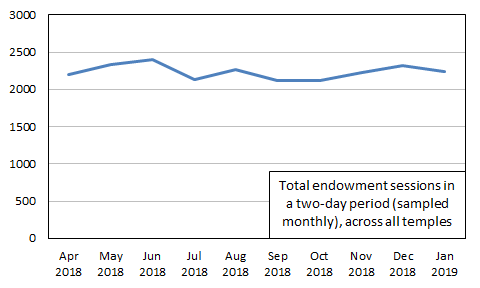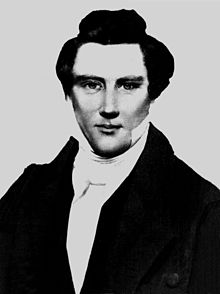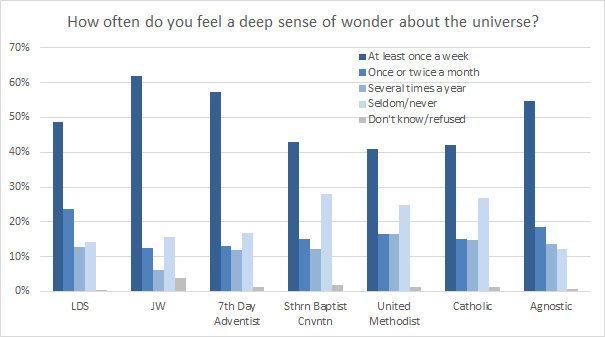At the residential crisis place where I landed a few weeks ago, we had occasional groups. One day, we did some basic mindfulness practice. Mindfulness is very trendy right now, but I’ve found it to be useful, and don’t mind (see what I did there) going over the basics again. As part of the exercise, they had us look out the window and just observe something for a little while. We then reported back on the experience. I was fascinated to note that everyone in the group except for me, with no prompting to do this, didn’t only talk about the experiencing of observing; they turned it into an inspirational message. For example, they saw the dead leaves on the trees, but realized that there was new life underneath. Or they noticed how a tree continued to grow despite obstacles. I found myself wondering—are people in other cultures this well-trained to relentlessly find inspiration in everything?
In most of the psych wards I’ve been in, they have you rate your mood every day on a scale of 1 to 10. I struggle with the quantification aspect of this, but usually do my best to accurately assess how I’m doing. One day I looked around at the papers of the people sitting around me, and saw that they’d all marked 10. I was mystified. I mean, you don’t get into a psych ward without being in fairly significant distress. Such a rating might have made sense if a person had been hospitalized during a manic episode, but that was clearly not the case for any of the people there that day. My guess was that they were reporting high numbers in an attempt to get released, which is usually the primary goal of people who are locked in a psych ward, but I also wondered whether it was connected to cultural expectations about making the best of everything and having a positive outlook. There’s a certain virtue in circling that 10. Sure you might be having a complete psychological breakdown, but you wouldn’t want to not be positive about the situation. In another group in the residential place I mentioned above, I listened to a fellow patient share that he knew that he could accomplish anything if he would just put his mind to it. The group leader enthusiastically agreed. I realize I’m probably overly cynical—it’s taken me much of my life to realize that it’s not necessarily delusional to try to stay generally upbeat, and that relentlessly negative people can actually be pretty exhausting—but it’s hard for me not see this sort of thinking as problematic. Because the dark side of the equation is that if you haven’t accomplished something, no matter how unlikely that thing may be, it’s because you just didn’t put your mind to it. Read More
 . . . . The moment [the ward librarian’s] back was turned some breezy teacher would waltz in to make a few copies, ignoring the “library demons only” sign on the scriptorium and wouldn’t you know it, the parchment would get stuck or start unravelling uncontrollably. Oh look, there it goes again. “This is so typical,” she thought as she heaved a giant tome of “church illustrations volume 7” onto the checkout desk. “At least I get to miss Sunday school and talk with my friend.” Despite its drawbacks, the Ward Librarian was a plum job even back then.
. . . . The moment [the ward librarian’s] back was turned some breezy teacher would waltz in to make a few copies, ignoring the “library demons only” sign on the scriptorium and wouldn’t you know it, the parchment would get stuck or start unravelling uncontrollably. Oh look, there it goes again. “This is so typical,” she thought as she heaved a giant tome of “church illustrations volume 7” onto the checkout desk. “At least I get to miss Sunday school and talk with my friend.” Despite its drawbacks, the Ward Librarian was a plum job even back then.




 In a stunning rebuke of the murmurnacle, President Nelson will announce that not only will the three hour block not be shortened to two hours, it will actually be lengthened to four hours. Existing meetings and classes will not be changed in length. The extra hour will be used for a mandatory meeting where all ward members (including primary and nursery-aged children) sit in council and discuss the importance of Defending the Family. Meetinghouses used by three wards will follow the 8-12/10-2/12-4 schedule. Fifth Sundays will be celebrated with a special five-hour block, with each meeting lengthened by 25%.
In a stunning rebuke of the murmurnacle, President Nelson will announce that not only will the three hour block not be shortened to two hours, it will actually be lengthened to four hours. Existing meetings and classes will not be changed in length. The extra hour will be used for a mandatory meeting where all ward members (including primary and nursery-aged children) sit in council and discuss the importance of Defending the Family. Meetinghouses used by three wards will follow the 8-12/10-2/12-4 schedule. Fifth Sundays will be celebrated with a special five-hour block, with each meeting lengthened by 25%.